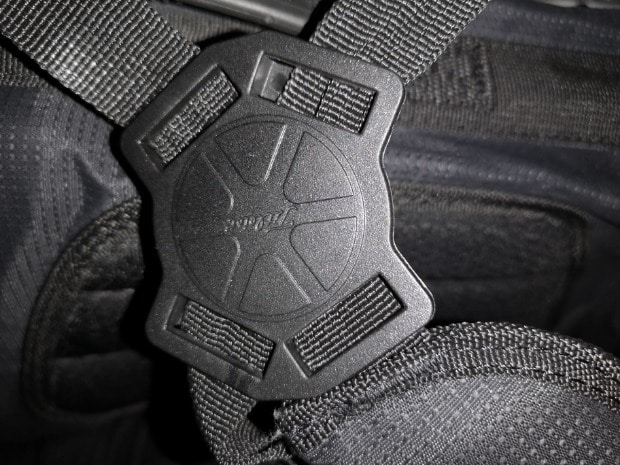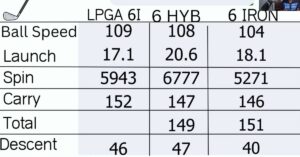Mallet vs Blade Putter: Comprehensive Comparison of Golf Putter Types
The putter is arguably the most important club in a golfer’s bag, and choosing the right type of putter can make all the difference on the green. Two popular putter types are the mallet and blade putter, each with their own unique features and benefits.
The main difference between mallet and blade putters is the size of the clubhead. Mallet putters have a larger clubhead, which makes them more forgiving on off-center hits. Blade putters have a smaller clubhead, which gives you more control over the direction of the ball.
In this article, we’ll provide a comprehensive comparison of mallet and blade putters to help you choose the right type of putter for your game.
Mallet vs Blade Putter: What Are The Differences?

Mallet and blade putters are the two main types of putters on the market. They each have their own unique advantages and disadvantages, so it’s important to understand the differences between them before you decide which one is right for you.
| Aspect | Mallet Putter | Blade Putter |
| Size | Larger | Smaller |
| Forgiveness | More forgiving | Less forgiving |
| Control | Less control | More control |
| MOI | Higher | Lower |
| Looks | More traditional | More modern |
| Feel | Softer | More clicky |
Size
Mallet putters have a larger clubhead compared to blade putters. The clubhead of a mallet putter is typically wider and deeper, providing a larger sweet spot. This increased size makes mallet putters more forgiving on off-center hits.
When you don’t strike the ball precisely in the center of the clubface with a mallet putter, it still has a better chance of sending the ball in the right direction. However, the larger size also means that you have less control over the direction of the ball during your stroke.
Forgiveness
Mallet putters are known for their forgiveness, making them an excellent choice for golfers who may not consistently hit the ball in the center of the clubface.
Even on mis-hits or off-center strikes, a mallet putter will still propel the ball relatively straight toward the target.
On the other hand, blade putters are less forgiving, meaning that if you hit the ball off-center with a blade putter, the ball is more likely to deviate from the intended line, potentially leading to missed putts.
Control
Blade putters offer more control over the direction of the ball compared to mallet putters. The compact and traditional design of a blade putter allows golfers to have better feel and feedback during their putting strokes.
Skilled players who prefer precise control over their putts often opt for blade putters. However, the trade-off is that blade putters are less forgiving and require more precise ball striking to achieve desired results.
MOI
Moment of inertia (MOI) is a measure of a putter’s resistance to twisting on off-center hits. Mallet putters typically have a higher MOI compared to blade putters.
The larger and more evenly distributed weight in mallet putters enhances stability during impact, reducing the effect of mishits.
This increased MOI contributes to the forgiveness and straighter ball direction of mallet putters.
Looks
The choice between mallet and blade putters also involves personal preference in terms of aesthetics. Mallet putters are often considered more traditional in appearance, featuring a larger clubhead with various designs.
Blade putters, on the other hand, are often seen as more modern and classic, characterized by their compact and minimalist design. Golfers should choose the putter that visually appeals to them and instills confidence during their putting strokes.
Feel
The feel of a putter is essential for many golfers as it influences their confidence and touch on the greens. Mallet putters generally offer a softer feel upon impact with the golf ball.
The larger clubhead of a mallet putter tends to absorb more of the ball’s impact, resulting in a smoother and softer sensation. In contrast, blade putters often provide a more clicky feel, which some golfers prefer for the feedback it provides during their strokes.
Mallet vs Blade Putter: What Are The Similarities?

Mallet and blade putters are the two main types of putters on the market. They have their own unique advantages and disadvantages, but they also have some similarities.
Both Putters Are Designed To Help You Hit The Ball Into The Hole
The primary purpose of both mallet and blade putters is to facilitate accurate putting strokes that guide the ball into the hole. While their designs and characteristics may differ, they share the common goal of providing golfers with a reliable tool to achieve success on the green.
Both Putters Have A Variety Of Features That Can Help You Improve Your Putting Stroke
Mallet and blade putters often incorporate innovative features to enhance a golfer’s putting technique. Alignment aids, such as sightlines or dots on the clubhead, assist golfers in aligning the putter accurately to their target. These aids aid in achieving a more consistent and precise stroke.
Both Putters Can Be Used By Golfers Of All Skill Levels
Whether you are a novice golfer or a seasoned pro, both mallet and blade putters are accessible to players of all skill levels. Beginners may find the forgiveness and stability of a mallet putter beneficial, while more experienced players might prefer the control and feedback offered by a blade putter.
Both Putters Can Be Made From A Variety Of Materials, Including Steel, Carbon Fiber, And Aluminum
Mallet and blade putters can be constructed from a range of materials, each offering its unique benefits. Common materials include stainless steel for a solid and traditional feel, carbon fiber for lightweight and vibration dampening properties, and aluminum for a balance between durability and weight.
Both Putters Can Have A Variety Of Head Shapes, Including Round, Square, And Teardrop
Manufacturers offer mallet and blade putters in various head shapes to suit individual preferences. Mallet putters can come in round, square, or even more elaborate designs, while blade putters often have classic and straightforward shapes like a teardrop.
Both Putters Can Have A Variety Of Shaft Lengths And Flexes
Customization options are available for both mallet and blade putters regarding shaft length and flex. Finding the right shaft length and flex allows golfers to optimize their putting stroke for comfort, consistency, and improved performance on the greens.
Mallet vs Blade Putter: Which One Is Better?

There is no definitive answer as to which putter is universally better. It largely depends on the golfer’s skill level, swing speed, and personal preference.
Beginners and those with slower swing speeds may find more success with a forgiving mallet putter, while experienced golfers with faster swing speeds might prefer the precision and control offered by a blade putter.
The best approach is to try out both types of putters and see which one feels more comfortable and suits your putting style and needs.
Ultimately, the golfer’s confidence and comfort with the putter will be the determining factor in their putting performance.
Frequently Asked Questions
If you’re a golfer, choosing between a mallet and a blade putter can greatly impact your game. Both putters have distinct features, and understanding the differences is crucial. Let’s explore some common questions related to mallet and blade putters.
Which Type Of Putter Is Better For Beginners?
Mallet putters are often recommended for beginners. This is because they are more forgiving, which can help beginners improve their putting stroke. However, some beginners may prefer the control of a blade putter.
Which Type Of Putter Is Better For Experienced Golfers?
Blade putters are often recommended for experienced golfers. This is because they offer more control, which can help experienced golfers make more precise putts. However, some experienced golfers may prefer the forgiveness of a mallet putter.
What Are Some Of The Other Differences Between Mallet And Blade Putters?
In addition to the size of the clubhead, there are a few other differences between mallet and blade putters. Mallet putters typically have a higher moment of inertia (MOI) than blade putters.





![How To Clean A Golf Bag? [Step-By-Step Guide] how-to-clean-a-golf-bag](https://giftedgolfers.com/wp-content/uploads/2023/06/how-to-clean-a-golf-bag-300x157.jpg)
